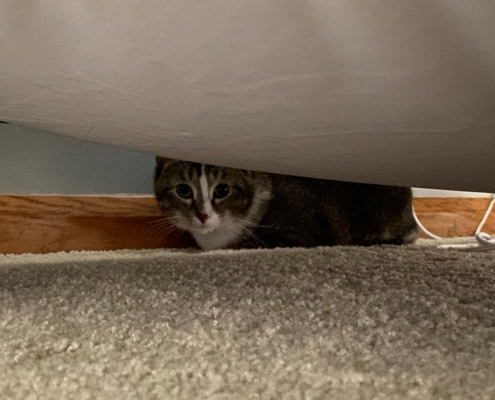Under the Bed
The noise starts as a low rumble, but I recognize it instantly. It’s a familiar sound in the summer, but it still takes me a while to determine if it’s coming from a neighboring yard or my own.
Piney and Goldie are already on alert, looking at each other and all around in an attempt to determine the proper reaction. As the sound grows louder and nearer, they both start to move.
Piney is the fastest, moving from her bed atop the living room cabinet across the shelf, down to the mantle, and then traversing the living room towards the bedroom, Goldie on her tail. They have both vanished before I see the mower pass across the front yard.
Piney doesn’t like loud noises, and Goldie follows her panicked cue. She heads to her safe spot: under the bed.
My bedroom has been her safe zone since she came here in November 2020. She spent most of the first week of her time in her new home in the bedcovers or under the bed. For most of the first year, she slept during the day between the covers on the bed. I think it’s because she felt most comfortable there. While she doesn’t day-sleep like that anymore, she still hides under the bed when she is scared. It’s still her safe harbor, where she runs to wait out a thunderstorm or fireworks, calm her nerves, and regroup before reentering the world.
When I see her run under the bed, I lie on the floor by the bed and talk to her softly. I reassured her that she was safe and everything would be okay. I tell her what the loud noise is and that she can come out whenever she is ready. I reassured her like any close friend because she is my friend. She has a fur coat, four legs, and a tail. I like to think it helps her, though I think it does more for me than her. She just looks at me. She will come out when she feels safe again.
Watching her run for her sanctuary makes me think about my own. The places I go when the human adult equivalent of the roar of the lawn mower, a crack of thunder, or a new person shakes my world. The places that allow me to regroup from the jolts of life. Sometimes, this is the long route around the nature center, a conversation at the dining room table with a trusted friend, or closing my eyes and focusing on my breath. A sanctuary can be a physical location or something we cultivate inside us and carry daily. We can also serve as our own reassuring friend, speaking gently to ourselves until we come out from under the bed.
Sanctuaries are a form of liminal space that allows us to assess the situation, ponder the hard questions, and reenter the world refreshed. Their physical form matters less than their effectiveness at providing us with a safe space to regroup. In a world that moves faster each day, we must identify where we can retreat when the lawn mower roars. It’s a critical form of self-care that shouldn’t be ignored.











 Created using Canva
Created using Canva © 2024 Catherine Haslag, All Rights Reserved
© 2024 Catherine Haslag, All Rights Reserved